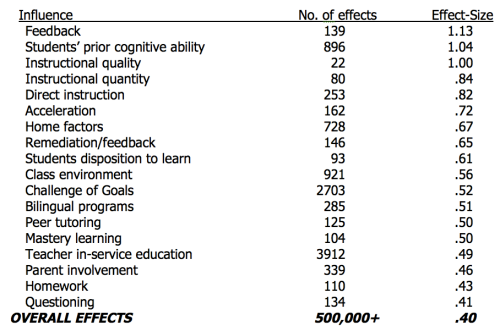
Books to improve your practice
It might seem odd to some teachers out there to read a book about teaching, particularly during the holidays, when one should be relaxing. However, there is definitely a lot to be gained from some of the literature out there. Here are the ones I have learnt the most from when it comes to MFL teaching. To some readers, it may come as a shock that “The Language Teacher Toolkit” is not on there, however I have only just purchased it and have only read a couple of chapters.

The Craft of the Classroom – Michael Marland (1934-2008)
This book was immensely helpful in my PGCE, NQT year and early years of teaching. Although it was written in the early nineties, the wisdom it provides is timeless. The late author covers relationships, discipline, establishing habits, parents, pressure, classroom layout, displays and more. Michael Marland, the author, comes across as a man who loved teaching. This book leaves nothing out. The effects of adverse weather on pupils is noted and the presence of plant-life to brighten up the classroom is suggested. His emphasis on the power of positive strong relationships comes across throughout. Having lent the book to an NQT, I am indebted to the Guardian for the following quote from the final page of the book:
“The craft [of the classroom] won’t work without a spirit compounded of the salesman, the music-hall performer, the parent, the clown, the intellectual, the lover and the organiser, but the spirit won’t win through on its own either. Method matters. The more ‘organised’ you are, the more sympathetic you can be. The better your classroom management, the more help you can be to your pupils.”

Student reactions to speaking activities.
Target Language Toolkit – Allison Chase
Target language use varies widely between classes, teachers, students, lessons and schools. This book has 90 ideas to increase TL usage in the classroom and is great to dip into for ideas occasionally to avoid getting stuck in a rut. Having picked it up again recently I am very tempted to try the following:
- List of 100 phrases. This is a list of 100 phrases or utterances that all pupils should be able to use. I think a mixture of testing and rewards may get them to use them more.
- Talk Time – 5-10mins speaking at the end of a lesson using whatever prompts the teacher brings. This could be objects, photo, music, something to eat. The author mentions she tried a blindfolded taste test of dark, milk and white chocolate with learners having to explain which kind they were eating, and which they preferred. I may make this one a teacher-led activity!
- Emergency flashcards for TL-shy classes – series of flashcards with the most basic phrases “yes”, “no”, “please”, “thank you”. I may adapt this slightly to have pronunciation on there too so that the learners can build their confidence.
Other areas covered include routines, games and activities, developing TL beyond the classroom and having a department wide TL policy. If you are considering a purchase, a longer review can be found here courtesy of Steve Smith. You can also follow the author on Twitter @AllisonChaseMFL.

Photo Credit: Arthur Schneider Flickr via Compfight cc
Why don’t students like school? – Daniel T Willingham
This is quite simply a superb book. The blurb on the front says “a cognitive scientist answers questions about how the mind works and what it means for the classroom.” It sets out this vision and sticks to it. A selection of chapter titles includes:
- “Why do students remember everything that’s on television and forget everything I say?”
- “How can I help slow learners?”
- “Is drilling worth it?”
- “How should I adjust my teaching for different types of learners?” This chapter ripped apart the Learning Styles Theories that I was taught on my PGCE.
The questions above are ones teachers ask themselves regularly! Each chapter is easy to read and answers the question it poses. Some chapters contain examples that the author explains. Sometimes there are examples that he lets you follow and work out, before presenting you with the answer, along with how your brain got there. Each chapter concludes with “implications for the classroom” and the book concludes by turning its attention to the reader. It asks the questions we should ask at the end of any educational book: What have you learnt? And what are you going to do about it?

Upgrade your French / German / Spanish – Margaret Jubb, Annemarie Künzl-Snodgrass, Silke Mentchen, Abigail Lee Six.
30 days of grammar, vocabulary and language development lie within the pages of these books. The books are generally designed for those between Sixth Form and University to shore up the basics of their language use. I would suggest they are excellent for MFL teachers who wish to work on their weaker language, but cannot access evening classes or are pressed for time. They may also be a good resource for your G&T students or native speakers.
Self-testing quizzes allow you to track your progress and see how you are doing. Answers can be found in the back. The first week of the German one is as follows:
- Cases
- Describing people -acquaintances, hairstyle, eyes, glasses, character, attitude, being keen on someone
- Pronouns
- Family and Society – genitive and possessive pronouns
- Nouns – genders and plurals
- Leisure – sport, verbs using fahren, meeting up with friends,
- Relative Clauses

Photo Credit: inspirationsyouth Flickr via Compfight cc
Cracking the Tough Class – Bill Rogers
Bill Rogers is a bit of a favourite on PGCE courses. None of the books on behaviour seemed to deal with some of the classes I encountered. This one gets close. It looks at the features of tough classes and how to deal with them. There is an entire chapter on how to establish the right environment with a tough class at the outset and how to effectively follow up disruptive students. One of the later sections suggests how more experienced colleagues might support members of their department. An idea – from this book – that changed my practice was having my tougher classes in teams that worked together. There would be a prize for the top two at the end of a term, and a transfer window at the start of a the new term. This book will not solve all your problems, but it might help you to find some solutions. If the picture that headed this review summarises how you feel, when that group (you know which one) appear on the timetable; it may well be worth a look!











